Bank of Canada Maintains Overnight Rate Target and Unveils New Market Operations
Michael Hallett • April 15, 2020

The Bank of Canada today maintained its target for the overnight rate at ¼ percent, which the Bank considers its effective lower bound. The Bank Rate is correspondingly ½ percent and the deposit rate is ¼ percent. The Bank also announced new measures to provide additional support to Canada’s financial system.
The necessary efforts to contain the COVID-19 pandemic have caused a sudden and deep contraction in economic activity and employment worldwide. In financial markets, this has driven a flight to safety and a sharp repricing of a wide range of assets. It has also pushed down prices for commodities, especially oil. In this environment, the Canadian dollar has depreciated since January, although by less than many other currencies. The sudden halt in global activity will be followed by regional recoveries at different times, depending on the duration and severity of the outbreak in each region. This means that the global economic recovery, when it comes, could be protracted and uneven.
The Canadian economy was in a solid position ahead of the COVID-19 outbreak, but has since been hit by widespread shutdowns and lower oil prices. One early measure of the extent of the damage was an unprecedented drop in employment in March, with more than one million jobs lost across Canada. Many more workers reported shorter hours, and by early April some six million Canadians had applied for the Canada Emergency Response Benefit.
The outlook is too uncertain at this point to provide a complete forecast. However, Bank analysis of alternative scenarios suggests the level of real activity was down 1-3 percent in the first quarter of 2020, and will be 15-30 percent lower in the second quarter than in fourth-quarter 2019. CPI inflation is expected to be close to 0 percent in the second quarter of 2020. This is primarily due to the transitory effects of lower gasoline prices.
The pandemic-driven contraction has prompted decisive policy action to support individuals and businesses and to lay the foundation for economic recovery once containment measures start to ease. Fiscal programs, designed to expand according to the magnitude of the shock, will help individuals and businesses weather this shutdown phase of the pandemic, and support incomes and confidence leading into the recovery. These programs have been complemented by actions taken by other federal agencies and provincial governments.
For its part, the Bank of Canada has taken measures to improve market function so that monetary policy actions have their intended effect on the economy. This helps ensure that households and businesses continue to have access to the credit they need to bridge this difficult time, and that lower interest rates find their way to ultimate borrowers. The Bank has lowered its target for the overnight rate 150 basis points over the last three weeks, to its effective lower bound. It has also conducted lending operations to financial institutions and asset purchases in core funding markets amounting to around $200 billion.
These actions have served to ease market dysfunction and help keep credit channels open, although they remain strained. The next challenge for markets will be managing increased demand for near-term financing by federal and provincial governments, and businesses and households. The situation calls for special actions by the central bank. To this end, the Bank is furthering its efforts with several important steps.
Under its previously-announced program, the Bank will continue to purchase at least $5 billion in Government of Canada securities per week in the secondary market, and will increase the level of purchases as required to maintain proper functioning of the government bond market. Also, the Bank is temporarily increasing the amount of Treasury Bills it acquires at auctions to up to 40 percent, effective immediately.
The Bank is also announcing today the development of a new Provincial Bond Purchase Program of up to $50 billion, to supplement its Provincial Money Market Purchase Program. Further, the Bank is announcing a new Corporate Bond Purchase Program, in which the Bank will acquire up to a total of $10 billion in investment grade corporate bonds in the secondary market. Both of these programs will be put in place in the coming weeks. Finally, the Bank is further enhancing its term repo facility to permit funding for up to 24 months.
These measures will work in combination to ease pressure on Canadian borrowers. As containment restrictions are eased and economic activity resumes, fiscal and monetary policy actions will help underpin confidence and stimulate spending by consumers and businesses to restore growth. The Bank’s Governing Council stands ready to adjust the scale or duration of its programs if necessary. All the Bank’s actions are aimed at helping to bridge the current period of containment and create the conditions for a sustainable recovery and achievement of the inflation target over time.
Information note
The next scheduled date for announcing the overnight rate target is June 3, 2020. The next full update of the Bank’s outlook for the economy and inflation, including risks to the projection, will be published in the MPR on July 15, 2020.
Here is a copy of the Bank of Canada's Monetary Policy Report
for April 2020.
SHARE
MY INSTAGRAM
Mortgage Brokering meets mountain biking and craft beer. A couple months ago I set for a bike ride with the intention of answering few mortgage related questions, mission accomplished. Any good bike ride pairs nicely with a tasty beer which we enjoyed @parksidebrewery. Hope you see the passion I have for brokering, biking and beer. @torcabikes #mountainbikingmortgagebroker
TEASER alert...at thats what I think they call it in the business. Years ago a wrote a blog called BEERS BIKES AND MORTGAGES. I some how (in my head) blended all 3 topics into 1 blog. Simply put, I enjoy aspects of all 3 with each of them providing something different. I re-united with the talented Regan Payne on a project that I think will shed a bit more light on who I am and what I do. #craftbeer #mountainbike #mortgagebrokerbc #dlccanadainc
I saw this hat on Instagram, that very moment I knew I needed it. As a BC boy born and bred The Outdoorsman hat needed to be added to my collection. As someone who loves BC and most things outdoor, I’m now glad I have a cool hat to wear and fly the flag of BEAUTIFUL BRITISH COLUMBIA. It will be in my bag for all post-exploration celebratory cold pints. If you want to check them out or add one to your collection go to @nineoclockgun ...and yes my facial hair matches the hat as well.
View more

Bank of Canada maintains policy rate at 2.1/4%. FOR IMMEDIATE RELEASE Media Relations Ottawa, Ontario December 10, 2025 The Bank of Canada today held its target for the overnight rate at 2.25%, with the Bank Rate at 2.5% and the deposit rate at 2.20%. Major economies around the world continue to show resilience to US trade protectionism, but uncertainty is still high. In the United States, economic growth is being supported by strong consumption and a surge in AI investment. The US government shutdown caused volatility in quarterly growth and delayed the release of some key economic data. Tariffs are causing some upward pressure on US inflation. In the euro area, economic growth has been stronger than expected, with the services sector showing particular resilience. In China, soft domestic demand, including more weakness in the housing market, is weighing on growth. Global financial conditions, oil prices, and the Canadian dollar are all roughly unchanged since the Bank’s October Monetary Policy Report (MPR). Canada’s economy grew by a surprisingly strong 2.6% in the third quarter, even as final domestic demand was flat. The increase in GDP largely reflected volatility in trade. The Bank expects final domestic demand will grow in the fourth quarter, but with an anticipated decline in net exports, GDP will likely be weak. Growth is forecast to pick up in 2026, although uncertainty remains high and large swings in trade may continue to cause quarterly volatility. Canada’s labour market is showing some signs of improvement. Employment has shown solid gains in the past three months and the unemployment rate declined to 6.5% in November. Nevertheless, job markets in trade-sensitive sectors remain weak and economy-wide hiring intentions continue to be subdued. CPI inflation slowed to 2.2% in October, as gasoline prices fell and food prices rose more slowly. CPI inflation has been close to the 2% target for more than a year, while measures of core inflation remain in the range of 2½% to 3%. The Bank assesses that underlying inflation is still around 2½%. In the near term, CPI inflation is likely to be higher due to the effects of last year’s GST/HST holiday on the prices of some goods and services. Looking through this choppiness, the Bank expects ongoing economic slack to roughly offset cost pressures associated with the reconfiguration of trade, keeping CPI inflation close to the 2% target. If inflation and economic activity evolve broadly in line with the October projection, Governing Council sees the current policy rate at about the right level to keep inflation close to 2% while helping the economy through this period of structural adjustment. Uncertainty remains elevated. If the outlook changes, we are prepared to respond. The Bank is focused on ensuring that Canadians continue to have confidence in price stability through this period of global upheaval. Information note The next scheduled date for announcing the overnight rate target is January 28, 2026. The Bank’s next MPR will be released at the same time.

Following several challenging years, British Columbia’s housing market is beginning to stabilize. Prices, which experienced downward pressure in 2024–2025, have largely plateaued, with some areas showing modest gains. The recent Bank of Canada rate reduction to 2.25% has lowered borrowing costs, improving affordability and supporting market activity. Across the province, housing supply is gradually increasing. Builders are delivering more condos, townhomes, and single-family homes, easing some supply constraints. Meanwhile, population growth, fueled by domestic migration and international immigration, continues to support long-term housing demand. Key Statistics Home sales: BC home sales declined slightly in 2025 by approximately 1.1% to 73,650 units but are projected to rebound in 2026 by around 8.8%, reaching roughly 80,150 units. Average home price: The provincial average price dipped modestly by 0.9% in 2025 to $972,800, with forecasts projecting an increase of 3.2% in 2026 to approximately $1,004,000. Benchmark home price: As of April 2025, the BC benchmark home price stood at $953,500, down 1.3% year-over-year. Listings and inventory: Active listings are expected to exceed 40,000 units in 2025, the highest in more than a decade. Market Forecast 2025: Market remains relatively flat, with modest declines in sales and prices. 2026: Sales and prices begin to recover, with modest upward trends. Early 2027: Market stabilizes, reflecting measured growth and improved affordability. Regional differences will continue. Urban condo markets may see slower price appreciation, while suburban and smaller communities with limited supply could experience stronger gains. What This Means for Buyers and Homeowners Prospective buyers: 2026 is an opportunity to enter a more balanced market with lower interest rates. Current homeowners: Refinancing or mortgage renewal could be advantageous in this period of slightly lower rates. Investors: Localized analysis is critical, as neighborhood inventory and rental demand will determine returns. Bottom Line: BC’s housing market is shifting from a cooling phase toward a period of gradual recovery. Lower interest rates, steady population growth, and increased housing supply point to a healthier, more sustainable market. Buyers, homeowners, and investors should plan strategically, recognizing that while growth is returning, the pace will be measured and regionally variable.







































































































